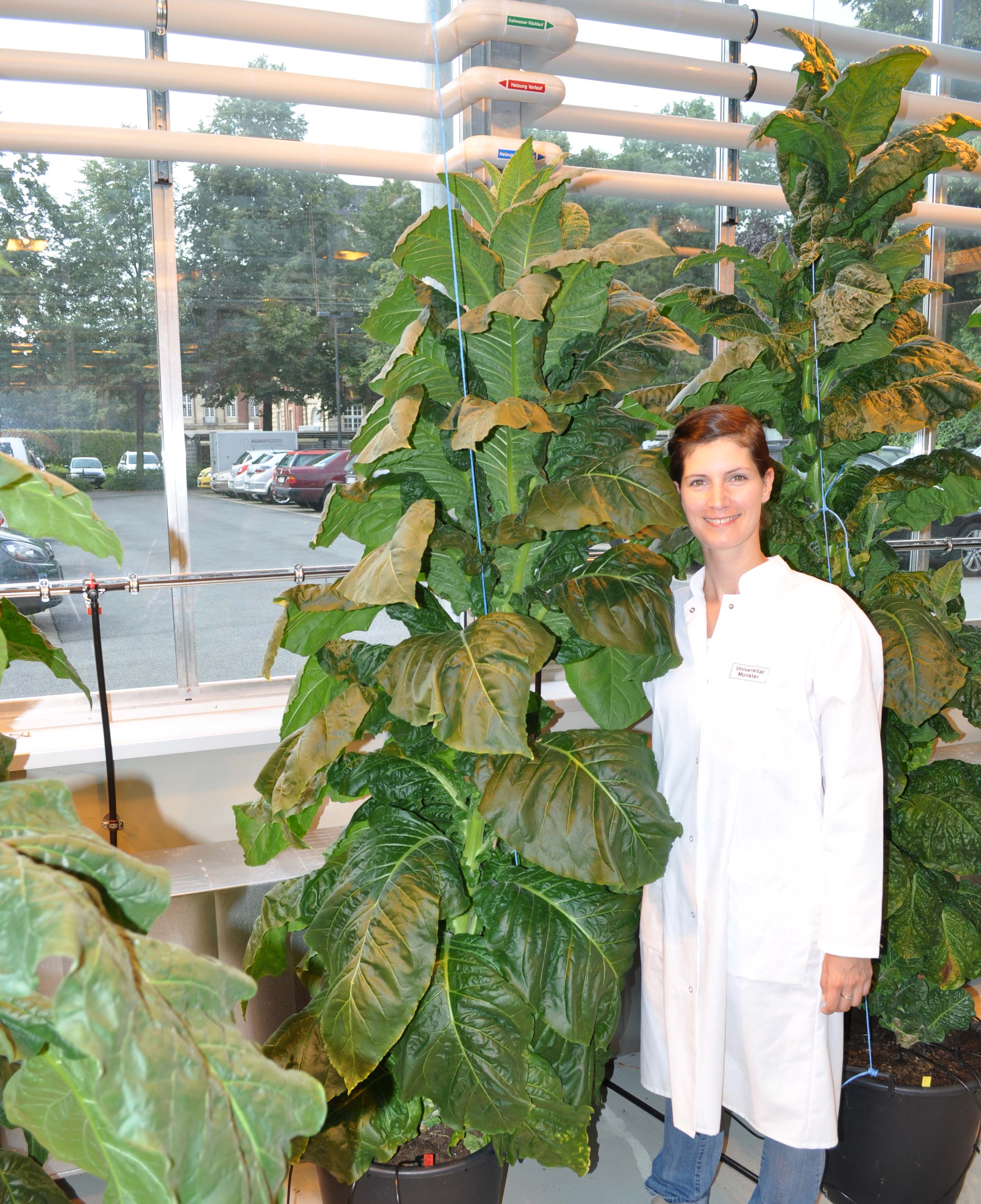In times of a rapidly growing world population, advancing climate change and a shortage of arable land, securing global food supplies is one of the greatest global challenges facing humanity. In order to meet this challenge, a drastic increase in agricultural production is an outstanding goal, in addition to a fairer distribution of food. Increasing plant biomass, i.e. increasing the yield of crops, is of fundamental importance in this context and is consequently the focus of modern plant breeding. In the “Functional and Applied Genomics” department of Fraunhofer IME at the locations Aachen and Münster, we investigate the floral induction mechanisms of plants. Based on this knowledge, we can increase biomass and yield of plants using modern breeding methods.
The timing of flower induction in plants is a tightly regulated process, as it determines the reproductive success of the respective species. Both external environmental stimuli (exogenous factors), such as the day length or a mandatory exposure to cold, as well as internal (endogenous) factors, such as the age of the plant, play important roles in this regulation. Even though the basic factors of flower induction are similar in many plants, this is a species-specific process, since the architecture of the plant body, the habitat and the age entering the flowering stage are often very different. Thus, a basic understanding of the decisive factors and processes is of fundamental importance, especially for conventional, but also for alternative, novel crops, as they directly influence the yield. The rapidly growing world population and the effects of climate change, such as prolonged periods of drought or flooding, are the driving forces behind modern plant breeding in terms of increasing yields and producing more adaptive plants.
The central factor of flower induction of almost all plants studied to date is responsible for triggering the entire cascade of flower formation and development: This so-called Flowering Locus T (FT) is within the focus of our research group. We aim to understand how FT is regulated, along with its downstream genes. Ultimately, we hope to be able to increase the biomass and thus the yield of crops by specifically modulating FT.
 Fraunhofer Institute for Molecular Biology and Applied Ecology IME
Fraunhofer Institute for Molecular Biology and Applied Ecology IME


